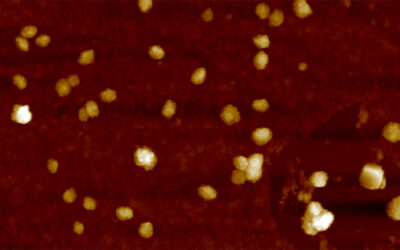Optical imaging is widely used in many biomedical applications ranging from clinical diagnosis to basic research in molecular biology. However, imaging tissues at centimetre depth is challenging with imaging systems that use only optics. Photoacoustic imaging (also known as optoacoustic imaging) is an emerging medical imaging technique that combines light excitation with ultrasound wave detection to provide substantial, non-invasive imaging depth to view internal organs in the body. It can provide better spatial and temporal resolution for understanding organ structures and how they function.
Like other existing clinical medical imaging modalities, such as X-ray computed tomography (X-ray CT), magnetic resonance imaging (MRI), and ultrasound imaging, photoacoustic imaging also takes advantage of contrast agents to improve its imaging capabilities.
Contrast agents, also known as contrast materials or contrast media, improve the visibility of specific organs, blood vessels, or tissues when they are in the body. They help physicians to diagnose medical conditions and allow the radiologist to distinguish normal from abnormal tissue. They can also bind to specific molecules, making them valuable for targeted molecular imaging. In the past decade, several contrast agents based on metallic, inorganic, and organic nanoparticles have been developed to improve photoacoustic imaging.
In a recent study published in WIREs Nanomedicine and Nanobiotechnology by Dr. Paul Kumar Upputuri and Dr. Manojit Pramanik from Nanyang Technological University seek to provide an overview of recent advancements made in photoacoustic contrast agents.
Interestingly, photoacoustic imaging can be performed using blood that is already present in the body as an intrinsic contrasting agent. Blood can absorb light and convert it into a detectable acoustic wave, which can travel a greater distance than is possible with light in biological tissues. Thus, this photoacoustic technique allows imaging deep inside tissues — something that is not possible with traditional techniques that rely solely on light.
“Due to available intrinsic contrast molecules in the body (e.g., hemoglobin), photoacoustic imaging has been widely used to visualize blood vessel structures, blood oxygenation mapping, [and] functional brain imaging, [among others],” say the authors in their study. While an interesting concept, “intrinsic blood contrast is not enough for imaging deeply seated blood vessels. Specific nanoparticles are needed to solve this problem,” said Upputuri.
To make diagnosis through imaging more accurate, contrast agents with strong absorption in the near-infrared window have been developed using inorganic materials — single walled carbon nanotubes, CuS, Ag nanostructures, metal–organic particles, and Bi2Se3 nanoplates — and organic materials — phosphorous phthalocyanine, organic charge transfer complex, and semiconducting nanoparticles. In particular, nanoparticles made from semiconducting polymers show interesting optical properties for clinical imaging.
While a promising new strategy, limitations to this technology exist. “A lot of nanomaterials are developed in the past decade, but biodegradable materials for photoacoustic imaging are rare,” said Dr. Manojit Pramanik. “However, recent progress in the field of biodegradable and metabolizable nanoparticles with potential use in clinical applications makes us hopeful that soon these nanoagents will be traveling inside our body to reveal more than what we can see at present.”
Research article found at: P. K. Upputuri, M. Pramanik, WIREs Nanomedicine and Nanobiotechnology, 2020, doi.org/10.1002/wnan.1618
Kindly contributed by the authors

















